Search
Remove Ads
Advertisement
Summary 
Loading AI-generated summary based on World History Encyclopedia articles ...
Search Results
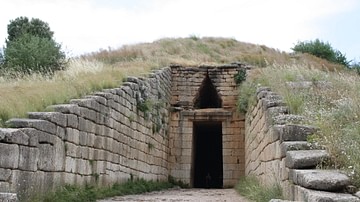
Definition
Tomb
A tomb is an enclosed space for the repository of the remains of the dead. Traditionally tombs have been located in caves, underground, or in structures designed specifically for the purpose of containing the remains of deceased human beings...
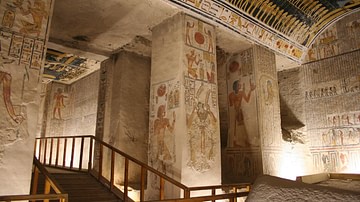
Article
Tomb Robbing in Ancient Egypt
The tombs of the great kings and nobles of Egypt were built to safeguard the corpse and possessions of the deceased for eternity and yet, while many have endured for thousands of years, their contents often disappeared relatively quickly...
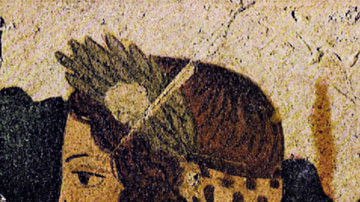
Article
Etruscan Tomb Paintings
The Etruscans flourished in central Italy from the 8th to 3rd century BCE, and one of their greatest legacies is the beautifully painted tombs found in many of their important towns. Tarquinia, Cerveteri, Chiusi, and Vulci, in particular...
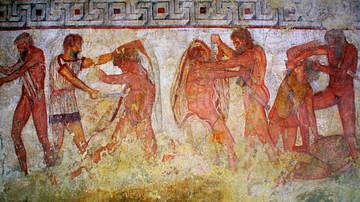
Definition
Francois Tomb
The Francois Tomb is an Etruscan tomb located at Vulci (Velch to the Etruscans), a town located 12 km from the western coast of central Italy, by the banks of the Fiora River. Flourishing as a trading port between the 6th and 4th century...
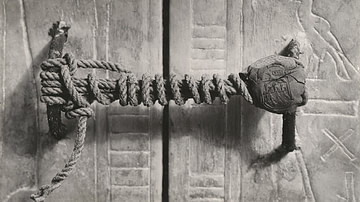
Article
The Mummy's Curse: Tutankhamun's Tomb & the Modern-Day Media
Howard Carter's 1922 CE discovery of the tomb of Tutankhamun was world-wide news but, following fast upon it, the story of the mummy's curse (also known as The Curse of the Pharaoh) became even more popular and continues to be in the present...
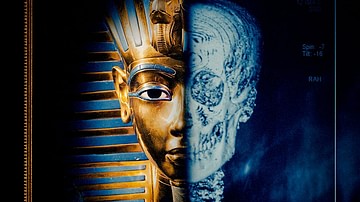
Interview
Tutankhamun and the Tomb that Changed the World with Dr. Bob Brier
Join World History Encyclopedia as they sit down with Dr. Bob Brier to chat all about his new book Tutankhamun and the Tomb That Changed the World, published by Oxford University Press. Kelly: Welcome. Thank you so much for joining me today...
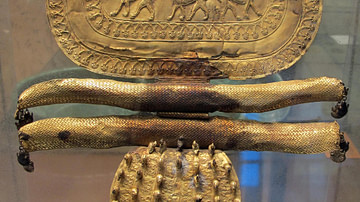
Article
Regolini-Galassi Tomb
The Regolini-Galassi Tomb is located in the Etruscan town of Cerveteri (aka Cisra or Caere) near the western coast of central Italy, around 50 km north of Rome. Cerveteri flourished between the 7th and 4th century BCE and has hundreds of...
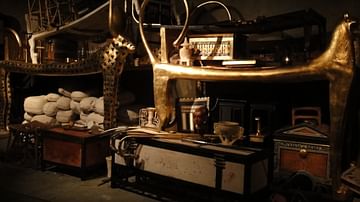
Article
The Discovery of Tutankhamun's Tomb
Before Howard Carter discovered Tutankhamun's tomb, he began his career as a 17-year-old artist on an excavation in Egypt. His skills were soon recognized, and he quickly rose to be an excavator and later chief inspector for Luxor. Because...
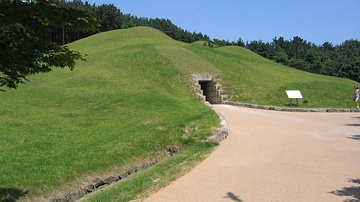
Article
The Tomb of King Muryeong
The tomb of king Muryeong is perhaps one of the most impressive tombs from the Baekje kingdom of ancient Korea, both in its design and the treasure found inside it. Muryeong-Wang (also Munyeong or Muryong) reigned from 501 to 523 CE. Baekje...
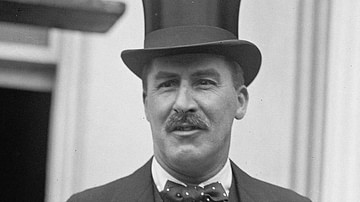
Article
Wonderful Things: Howard Carter's Discovery of Tutankhamun's Tomb
The great discoverer of the treasures of King Tutankhamun, Howard Carter, was born on May 9, 1874 CE to Samuel John and Martha Joyce (Sands) Carter in Kensington, England. A sick, home-schooled child, Carter learned to draw and paint from...